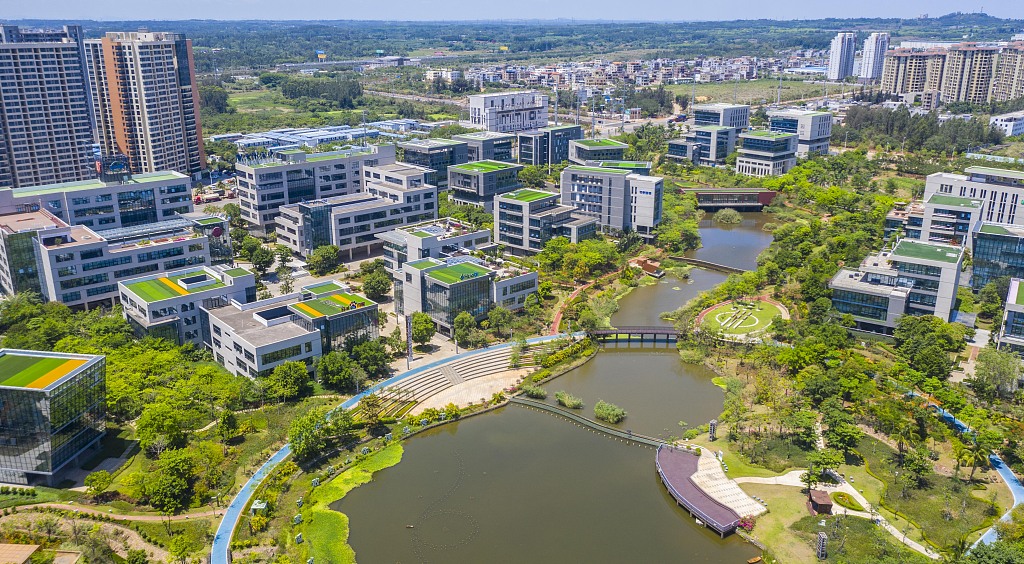
Editor's note: Tom Fowdy is a British political and international relations analyst and a graduate of Durham and Oxford universities. He writes on topics pertaining to China, the DPRK, Britain and the U.S. The article reflects the author's opinions, and not necessarily the views of CGTN.
On June 1, China's authorities announced a 2025 master plan for the country's Hainan Island that will involve transforming it into a free trade port with zero-tariffs, low taxes, local autonomy, expanded market access and an emphasis on building high-tech industries, as well as tourism.
The plan was initially announced as far back as 2018, but was formally ratified at the annual session of the National Committee of the Chinese People's Political Consultative Conference. As quoted by Xinhua, "The authorities expect to make Hainan, China's largest special economic zone, the front line of China's integration into the global economic system." In preparation, the area had already been designated as China's first visa-free tourist zone for up to 58 different countries.
The development of the port symbols a new step in China's economic reform and opening-up, which will incorporate an important role into the country's future development. It comes at a crucial time when other traditional destinations are being plunged into uncertainty.
The island's geographic position renders it an essential and strategic location which will ensure it can become a launchpad for investors in expanding across the Asia-Pacific and integrating the region. Given this, Hainan has a very exciting future and it is undoubtedly a symbol of the country's limitless potential.
Where is Hainan, and why does it matter? As the name implies – "Hainan" or "south of the sea" – the island is China's most southern province, lingering in the sea between Guangdong and Vietnam. Populated with 9 million people, the area is known for its beautiful scenery, nature and blue skies.
Efforts from the Chinese government to fulfill its economic potential have long been in the wing. In the 1980s, former leader Deng Xiaoping formally separated Hainan from Guangdong and made it one of China's first special economic zones. Nevertheless, its economy has primarily been based around fishing, agriculture and tourism.
The events of recent years have seen China's government make further reform and development in Hainan a national priority.
However, this is not about flooding the area with factories or destroying its natural beauty, instead it is a development plan that leans toward China's broader vision of creating an economy that does not simply produce trade, but facilitates it, while propelling itself on consumerism and flowing financial capital. This makes its location more essential than ever, because it stands as a bridge between China and Southeast Asia.

A view of Haikou, capital of Hainan Province. /VCG
A view of Haikou, capital of Hainan Province. /VCG
In doing so, the master plan is a detailed response to the context of growing trade, investment and commerce in the approximate region, which has included rapid growth in neighboring Vietnam and similar countries and thus a rapid expansion of cross-border manufacturing and commercial trends.
As China's own trade with the Association of Southeast Asia Nations continues to grow, it is important the country positions itself to benefit from this. In turn, the authorities see an opportunity in pivoting the island as a base for investment, imports and exports to further integrate the country with the surrounding regions. This is what projects such as the Belt and Road Initiative aim to achieve.
The timing of the plan and its specific goals are not coincidental, as other geopolitical events have created urgency for China to expand its number of free ports and financial centers that offer a platform into the Chinese mainland. Most notably, the events in Hong Kong, whereby political uncertainty has highlighted the potential issues of an "all eggs in one basket" location.
In doing so, China's master plan aims to envelope the goals of expanding tourism, trade and investment all into one package and thus position the island at the forefront of its economic future.
Therefore, as a whole, Hainan has an exciting future. Blessed by geography and within a region which is set to thrive, the island has a unique opportunity to transform itself into a free port that can serve as a hub of trade, finance, investment and tourism.
In doing so, China continues to demonstrate its commitment to economic opening region by region. The reforms of old in Shanghai and Shenzhen have proven to be an overwhelming success, and as it rides on a wave of development and expansion of commerce in Southeast Asia, as will Hainan.
(If you want to contribute and have specific expertise, please contact us at opinions@cgtn.com.)